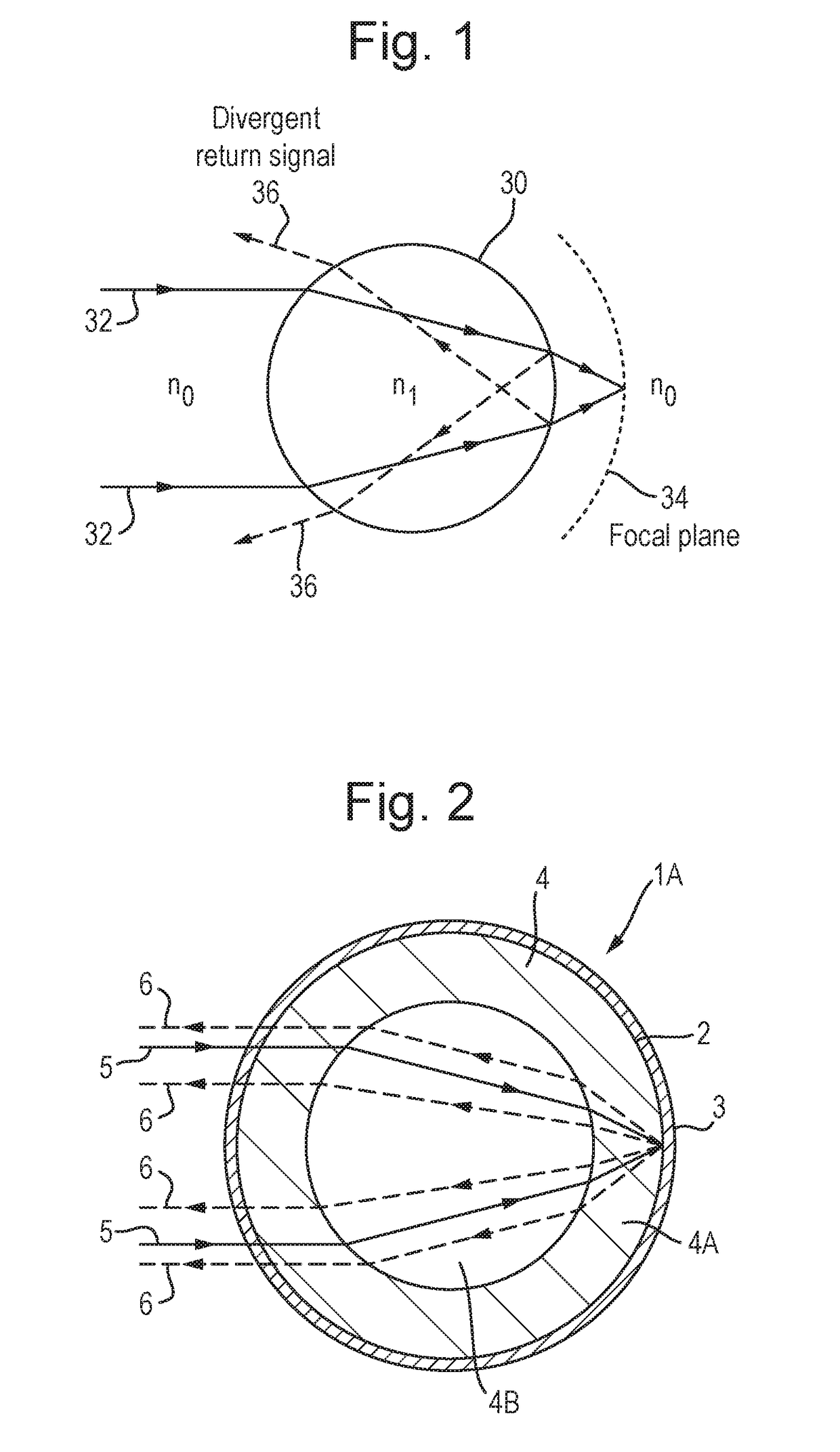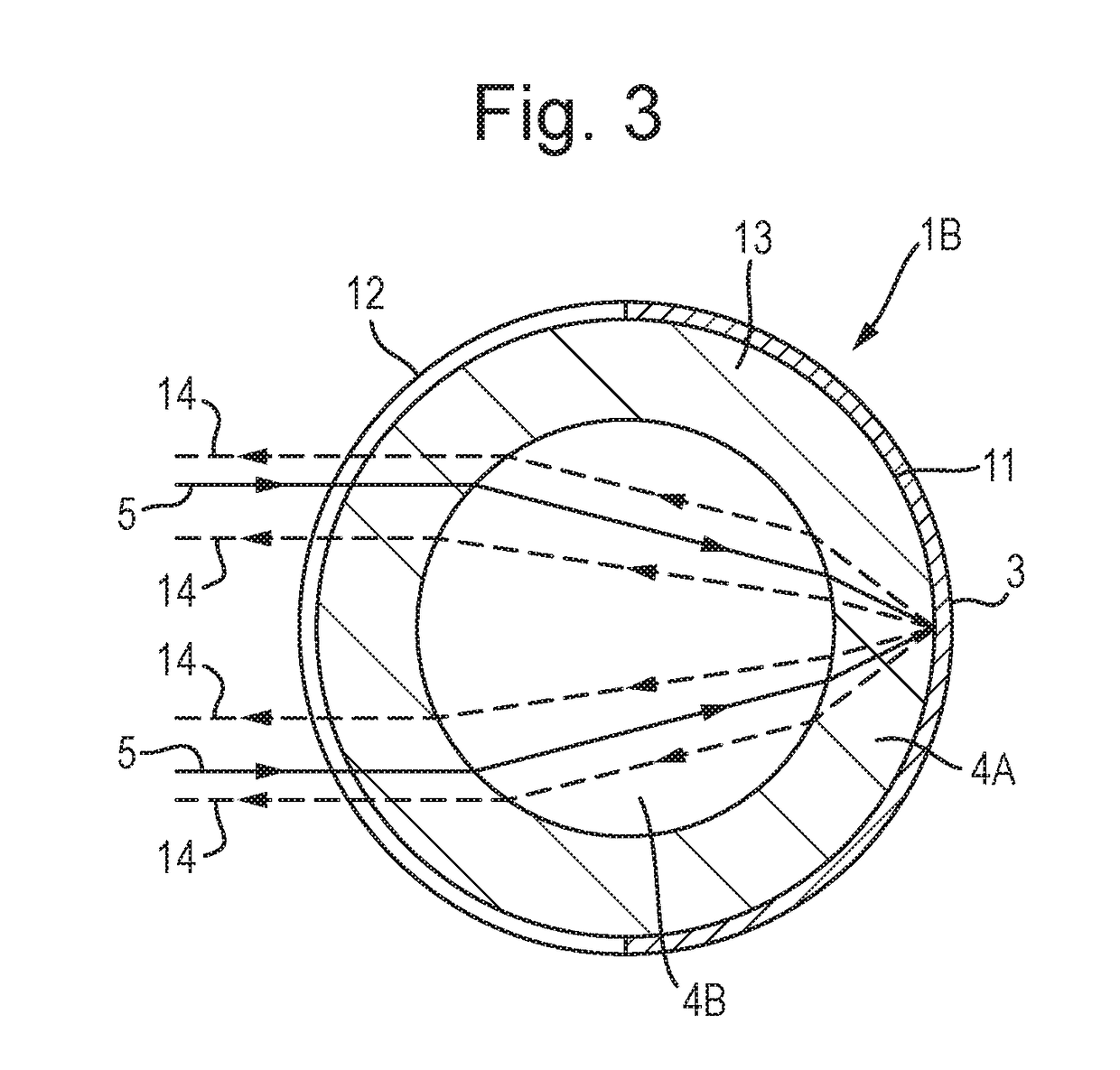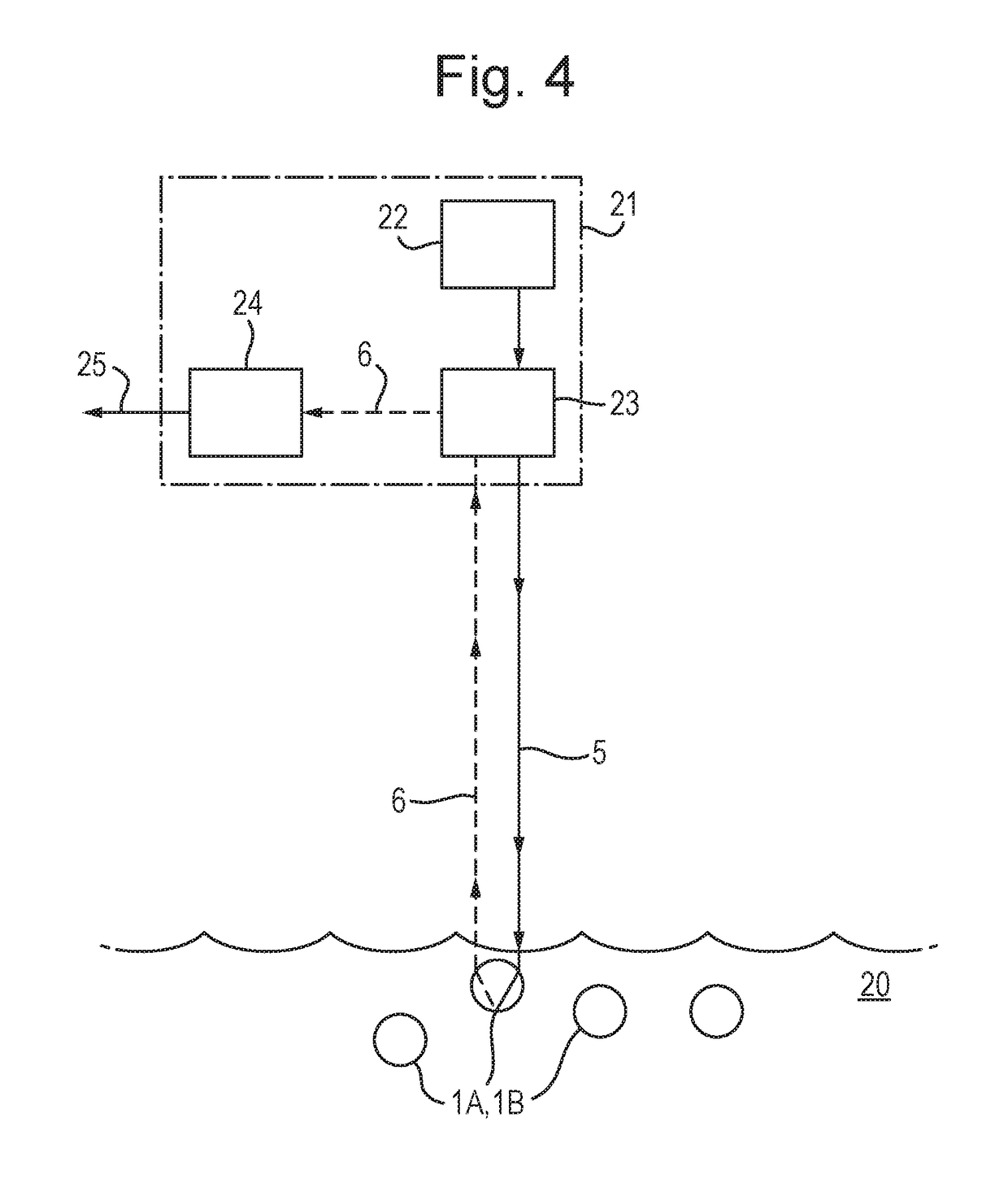Improvements in and relating to remote sensing
a remote sensing and remote sensing technology, applied in the field of remote sensing systems and methods, can solve the problems of difficult to utilise raman techniques in environments, and limited use of raman lidar methods, so as to enhance buoyancy, enhance retro-reflection efficiency, and facilitate the effect of manufacturing the cor
- Summary
- Abstract
- Description
- Claims
- Application Information
AI Technical Summary
Benefits of technology
Problems solved by technology
Method used
Image
Examples
Embodiment Construction
[0045]In the drawings, like items are assigned like reference symbols.
[0046]FIG. 1 schematically illustrates an optical glass bead 30 formed from a sphere of glass having refractive index n1 immersed within an environment having a refractive index n0 and illuminated with a beam of visible light 32 which enters the body of the spherical bead at one side and exits the body of the bead at the opposite side. The positive optical power of the glass bead means that light passing through it is converged towards the surface of the bead at its exit side. However, complete convergence is not achieved at the surface of the exit side due to insufficient refractive power of the glass at the surface of the entry side of the glass bead at the interface between the glass of refractive index n1 and the environment of refractive index n0. The result is that the focal plane 34 of the glass bead lies outside the bead.
[0047]A further consequence of the insufficient refractive power of the glass is that ...
PUM
| Property | Measurement | Unit |
|---|---|---|
| decay time | aaaaa | aaaaa |
| decay time | aaaaa | aaaaa |
| decay time | aaaaa | aaaaa |
Abstract
Description
Claims
Application Information
 Login to View More
Login to View More - R&D
- Intellectual Property
- Life Sciences
- Materials
- Tech Scout
- Unparalleled Data Quality
- Higher Quality Content
- 60% Fewer Hallucinations
Browse by: Latest US Patents, China's latest patents, Technical Efficacy Thesaurus, Application Domain, Technology Topic, Popular Technical Reports.
© 2025 PatSnap. All rights reserved.Legal|Privacy policy|Modern Slavery Act Transparency Statement|Sitemap|About US| Contact US: help@patsnap.com



